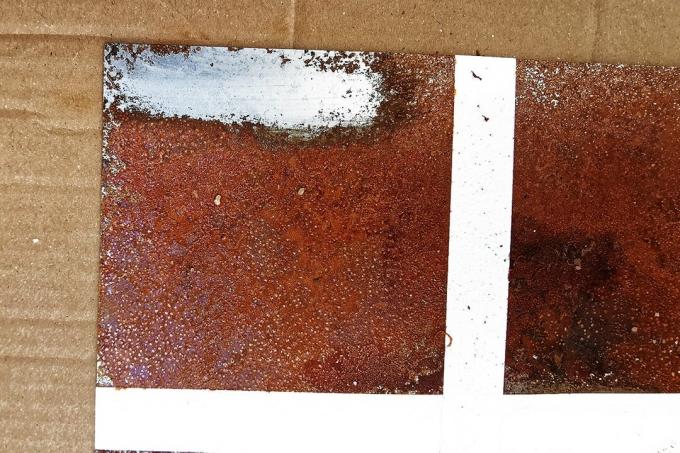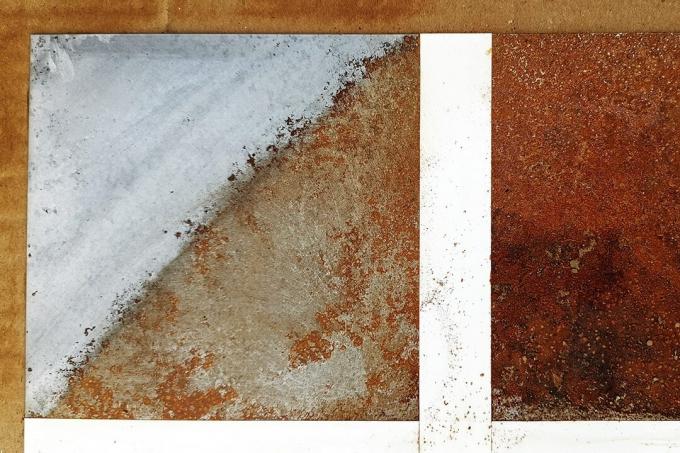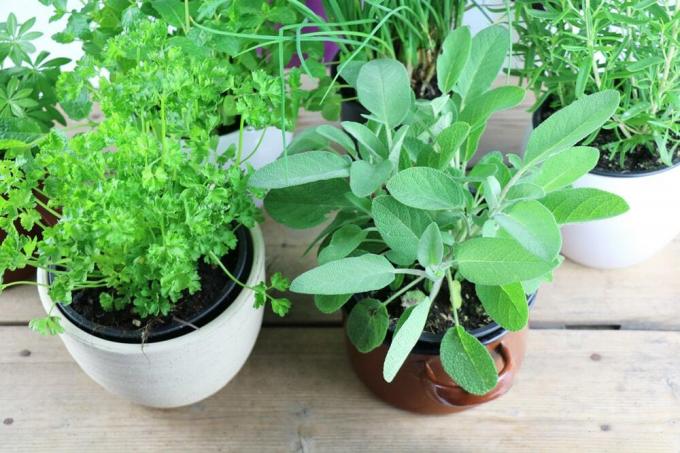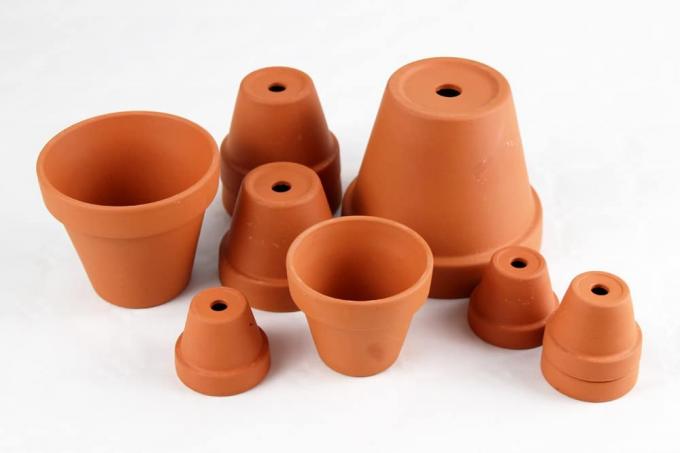

Table of contents
- What is patina?
- Metal look decoration
- The right stuff
- protective layer of zinc
- Remove galvanizing
- Instructions for patina
- The easy way
- For the patient
- More home remedies
- Pure chemistry
- mechanical techniques
- Prepare the surface beforehand
- Apply correctly
- stop rusting
- Remove rust
- rust spots
- More appearance than reality
Actually, when things rust, it's time to replace them or somehow fix them up. With patina, however, it is different, here metal is intentionally made to rust in order to intentionally get the perfect rust look.
What is patina?
While rust is an undesirable side effect of weather and time on metal, patina is a targeted stimulus for the workpiece to rust. Various techniques and methods are used to create a wide variety of patina patterns and drawings

When it comes to interior design with wood, it is trendy to combine old wood and new solid pieces of furniture. In this way you make a statement for the material 'wood'. This mix of materials can also be applied to metal: old metal, with or without rust, can be combined with modern shelves and wall elements, e.g. B. to live the industrial style in the home in an impressive way. A component of this mix can
be metal plates that are print with photos permit. You don't have to do without metal for the photo wall and you can create a unique wall decoration.The right stuff
When making patina yourself, you want a surface to rust “quickly” and not just wait for nature to take its course. In order for this to work, a few things need to be considered.
Rusting only works with ferrous metals, other metals also react with air over time, but do not form the desired golden brown patina. For example, copper will eventually develop verdigris and aluminum will develop whitish-grey aluminum rust.
protective layer of zinc
Since galvanizing is a very effective protective layer against rust, it is advisable to organize ungalvanized steel material directly.
Ungalvanized smooth sheet steel is particularly suitable
- because it is very stable
- not quite as intense in price
- as it rusts quickly and well
Tip:
Test with a magnet whether the desired material also contains iron / is magnetic.
Remove galvanizing
Acetic acid can attack zinc and even remove the galvanizing. This is worthwhile if you want to give a tin can (tin plate) a rusty look.
With the appropriate protective equipment, the protective zinc coating can also be removed with swimming pool cleaner (with hydrochloride).
Tip:
If it is possible, the still galvanized piece of metal should be left in the respective acid overnight and then the next day with gloves and abrasives (wire brush, waterproof sandpaper) remove the remainder of the galvanizing.
Instructions for patina
Since the production of patina is always associated with some dirt, you should definitely Protect the surface and don't do without an underlay, because rust stains are difficult to remove removed.
The easy way
- spray bottle
- Warm water
- Salt
- rubber glove
- safety goggles (optional)
All you really need is water and salt. Commercially available table salt, which is available in every supermarket and discounter, is sufficient.
Location
Working in a well-ventilated room or, even better, outdoors has many advantages for patina production:
- less odor nuisance
- often easier to clean
- shorter drying times
- more effective chemical reaction (oxidation) -> it rusts faster
Step 1
Dissolve some salt in water. Add salt to the water, teaspoons at a time, stir and wait for it to dissolve. Then fill the water-salt solution in a spray bottle.

step 2
Now a light mist is applied to the metal. In this case, less is more, the finer the droplets are, the better the salt water can react with the subsoil and oxygen.
Tip:
The working environment should be cool so that the water does not evaporate immediately. The slower the process, the better the result.
The first brown discolorations appear after a short time. As soon as the surface is dry again, the next spray from the bottle follows.
Step 3: Don't touch!
Even if it is very tempting to want to touch the first rust successes right away - NO - please be patient. These are very fragile first results that can be removed immediately with a wipe.

If you spray the plate all (afternoon) diligently, let it dry and do it again spray... and then leave the plate outside overnight, better ones show up Results. The more time rust gets to develop, the more perfect the rust look will be.
For the patient
Just leave the metal plate outside and the weather will conjure up an incomparable patina. Patina can be motivated a bit by letting some water run over the surface yourself (see The Easy-Way). But nature does most of the work for you here.
More home remedies
Acetic acid or vinegar essence with soda (alternatively Kaiser-Natron) can also have a good rust-promoting effect. Here, however, you should definitely pay attention to very good ventilation, since the permanent smell of vinegar is not for everyone. Gloves and safety goggles should also be used here. The application and processing are the same as with a salt water solution.
A notice:
Mix the two components very carefully, as it foams up very quickly and can also develop strong warmth or heat.
Pure chemistry
Hydrochloric acid is also said to have a very good rust effect and, above all, to be able to dissolve galvanizing very quickly. However, this is a fairly aggressive acid, which on the one hand is not so easy can be obtained and on the other hand there is already some experience with chemicals in handling requirement.

Editor's note:
We gues explicit from the use of hydrochloric acid since the use nothing for laypeople is. It is a dangerous goods, which one potential danger for health and the environment.
Spare yourself the shocked expression on the face of the pharmacy staff when asking. The pharmacies that are allowed to sell hydrochloric acid are very manageable and very difficult to find. However, they are only allowed to sell hydrochloric acid under very strict conditions.
Tip:
If you have a chemistry kit or have friends in a chemistry lab, you can try your luck there.
mechanical techniques
In order to be able to make patina yourself, you need moisture and dryness again and again so that the oxygen causes the metal to rust nicely. There are also different techniques for different patterns and rust looks.
Prepare the surface beforehand
The surface can be roughened and thus enlarged with a wire brush, coarse or fine sandpaper. The more attack surface the rust gets, the wilder it can develop. Patterns or even fonts can be incorporated into the material beforehand. A variety of filigree results can be achieved with a graver or a flex.
Apply correctly
spray
With a spray bottle you can work particularly comfortably, easily, quickly and cheaply. You should always rinse the bottles with clear water before longer breaks so that the nozzle does not become clogged.

Dive
Here the workpiece is immersed in the appropriate liquid and then left to dry. Alternatively, you can also let the liquids run over the surface. The result is beautiful gradients.
sponge
Various patterns can be dabbed on with sponges. This technique is suitable when a good rusty base has already emerged. Whether you use a natural sponge, a normal kitchen sponge or with scissors or Using prepared sponges for lacing is purely a matter of taste, leaving plenty of scope for your own imagination.
wiping / grinding
If the patina's appearance is too wild for you, you can carefully smooth the surface with a cloth or fine sandpaper. You get a uniform brighter surface.
Tip:
Before you want to make changes to the grate, you should carefully test whether the patina is already firmly attached to the substrate or is still too loose on it lies.
stop rusting
To stop the rust you have to smother it. The surface can be refined and sealed, but you should always keep in mind that as soon as air (oxygen) gets to rust and metal, they will continue to rust.
clear coat
Clear varnish is suitable for indoor use, so you can seal the surface. However, you should always be careful where you keep the workpiece. If the humidity is high, further rusting can occur.
rust impregnation
A rust seal with a penetrating oil (OWATROL oil) is one way to temporarily stop the rusting process.
There are a few benefits that come with this seal:
- Rust no longer rubs off
- The surface can even be written on
- there are no rust spots on the substrate
The only disadvantage outdoors is that the sealing has to be renewed again and again in spring and autumn.
epoxy resin
If the patina plate is to be used as a surface, it can also be sealed with epoxy resin (resin).
Tip:
Always keep an eye on patina products, because if the rust continues to work, the perfect rust look can quickly spread to the surface or the surrounding area.
Remove rust
If rust has formed in the wrong place or you want to intervene directly in the rust pattern, you can work with vinegar essence. This is often used to remove rust. Often you will also find instructions in which you can make patina with vinegar essence and soda - but unfortunately we were not convinced of the result.

rust spots
– "Rust is contagious" –
When making patina yourself, you should never do without a suitable base. Make sure you wear appropriate work clothing and ensure that you store it appropriately, because rust stains, and a lot at that. Rust leaves stains that are not easily removed. However, rust can also spread to other rustable materials and all metal parts will turn golden brown - whether you like it or not.
More appearance than reality
You can also give the appearance of patina with a few tricks. There are several options for making rust paint yourself:
- Buy finished rust paint (rust look).
- Collect rust and mix with brown paint
- Make rust pigments yourself with steel wool (abrasive from hardware store) and water
 Home editorial office
Home editorial office
Learn more about garden decor

Cladding the garden wall: 13 ideas for wall cladding
Lovingly designed flower beds are only half as beautiful when a gray concrete wall rises up in the background. Unfortunately, this cannot be removed so easily. No problem, because there are other ways to visually enhance the garden. This guide has many creative ideas for covering a garden wall.

Make signs for the herb garden yourself: Make herb signs
You can get signs for the most common herbs in stores, but home-made herb signs have much more charm and can be labeled individually. Thanks to meaningful labeling, mix-ups in your herb garden are now a thing of the past.

Terracotta pots: how to clean flower pots - care and cleaning
If white limescale and verdigris spoil your terracotta pots, you can solve the problem with simple home remedies. This guide is packed with practical tips for caring for Mediterranean clay flower pots. Your old terracotta pots will shine in new splendor.

Plant zinc tub - suitable plants
A beautiful old zinc tub makes a very good decoration for the terrace or garden. In the past, these tubs were used in households to wash clothes or bathe small children.

These 3 software and 5 online garden planners are free?
On the way to the dream garden, virtual garden planning gives your wishes unlimited scope. You don't have to spend any money to visualize and skilfully plan your green paradise. These 3 software and 5 online garden planner are free.

Remove tree stump - burn out or mill?
If a tree was felled on a plot in front of a family house, the stump must disappear because he has most of the other planting plans on the already not huge property adversely affected.



